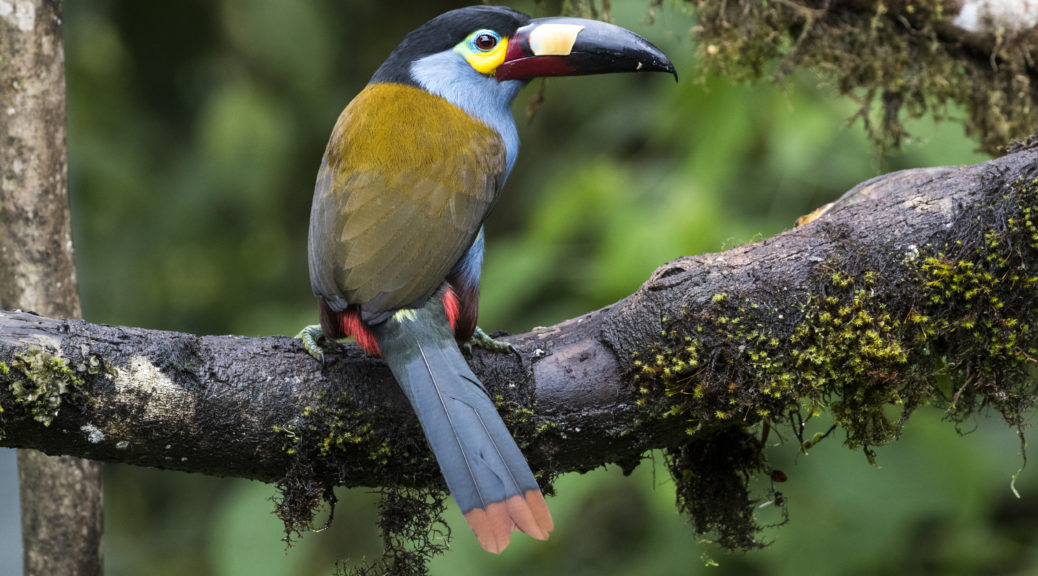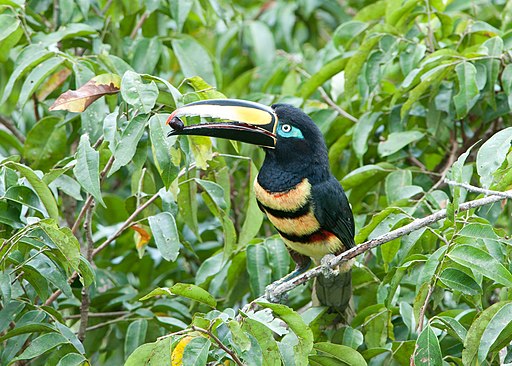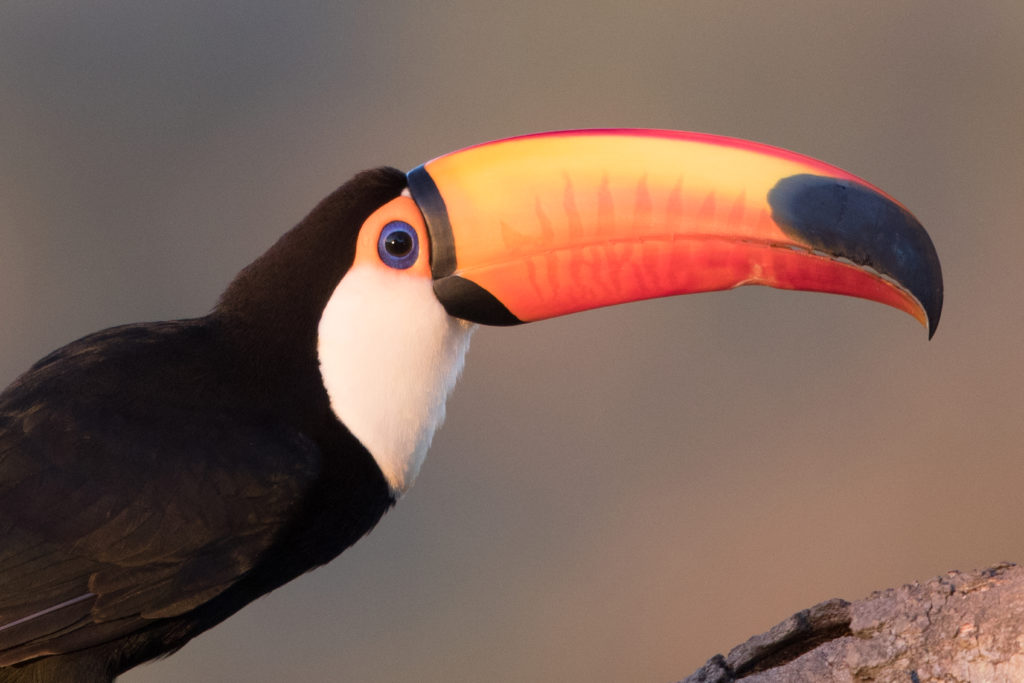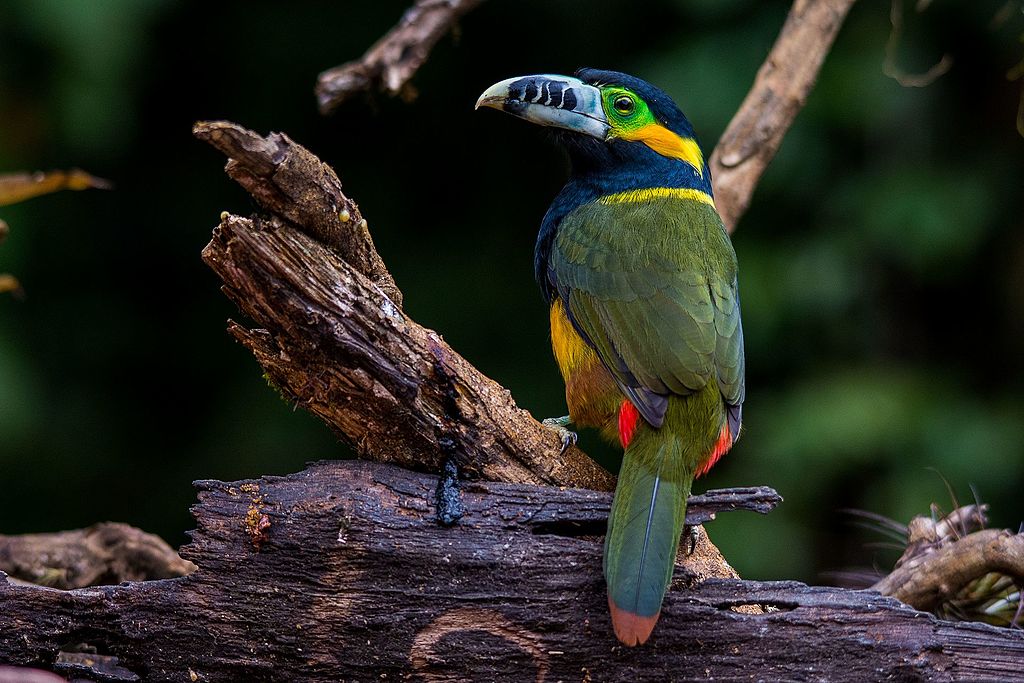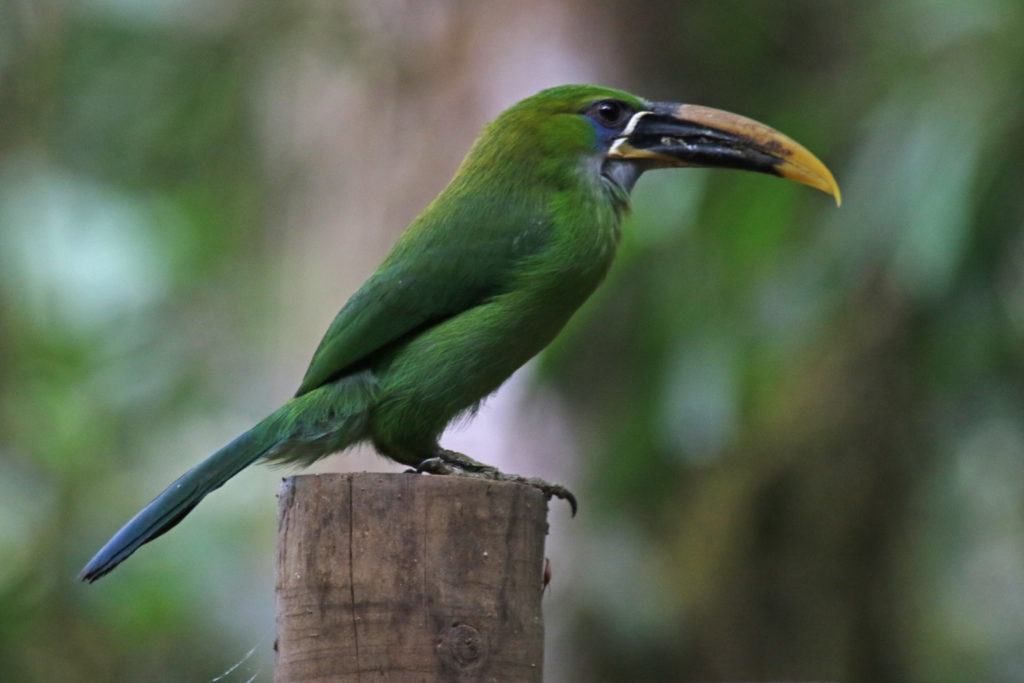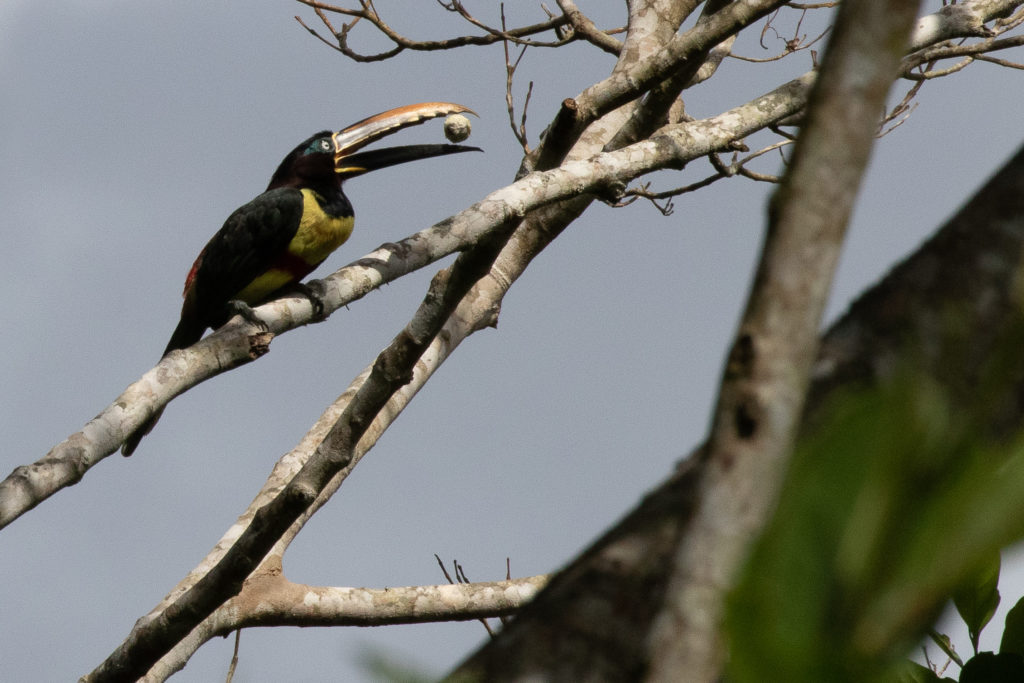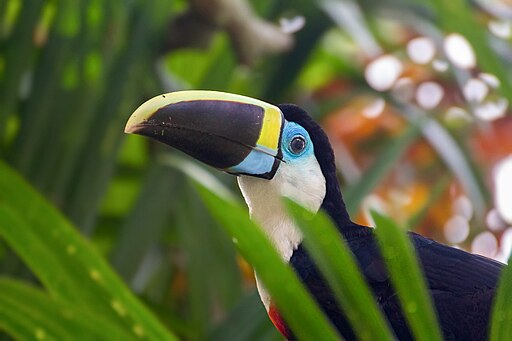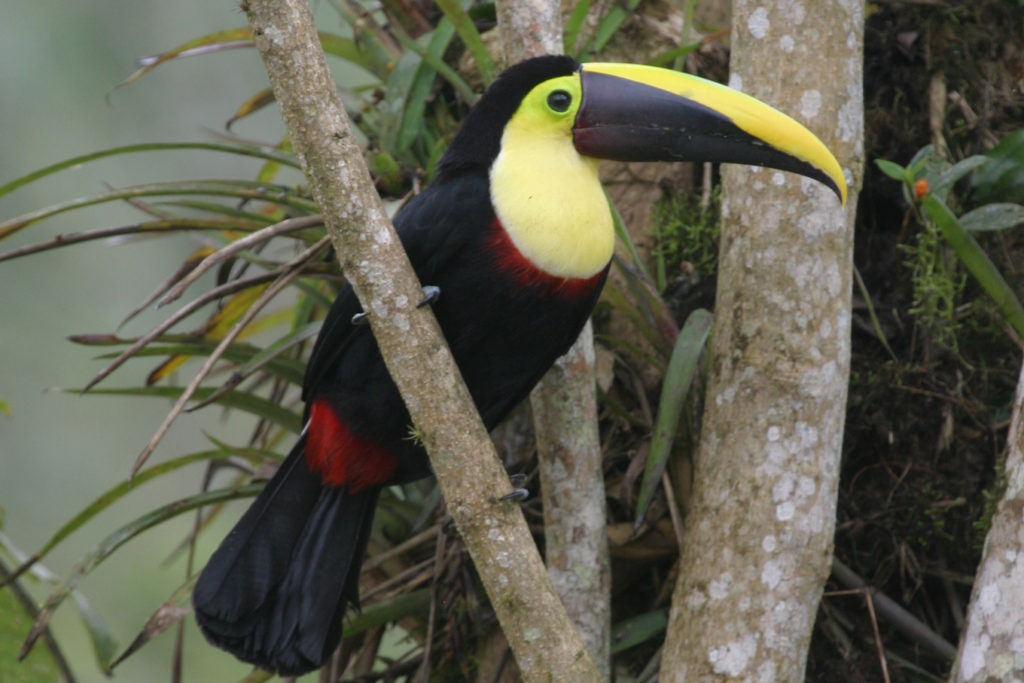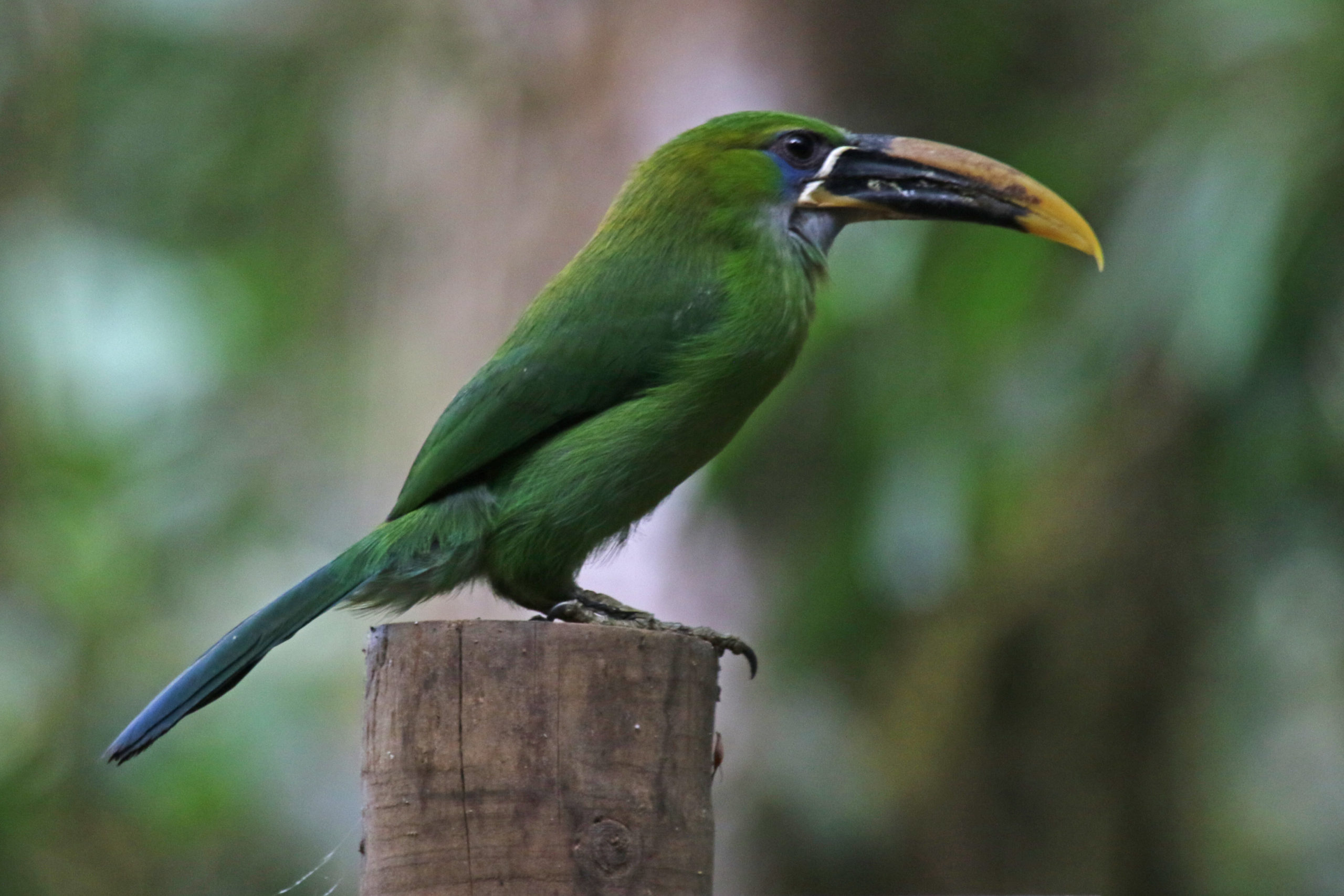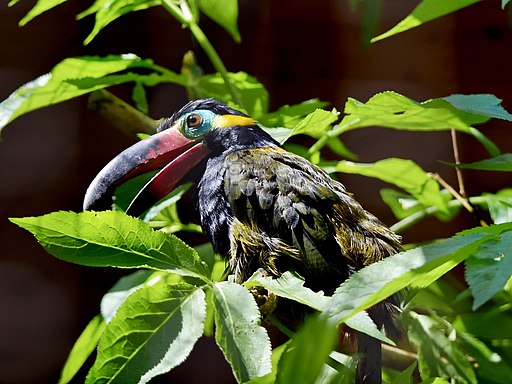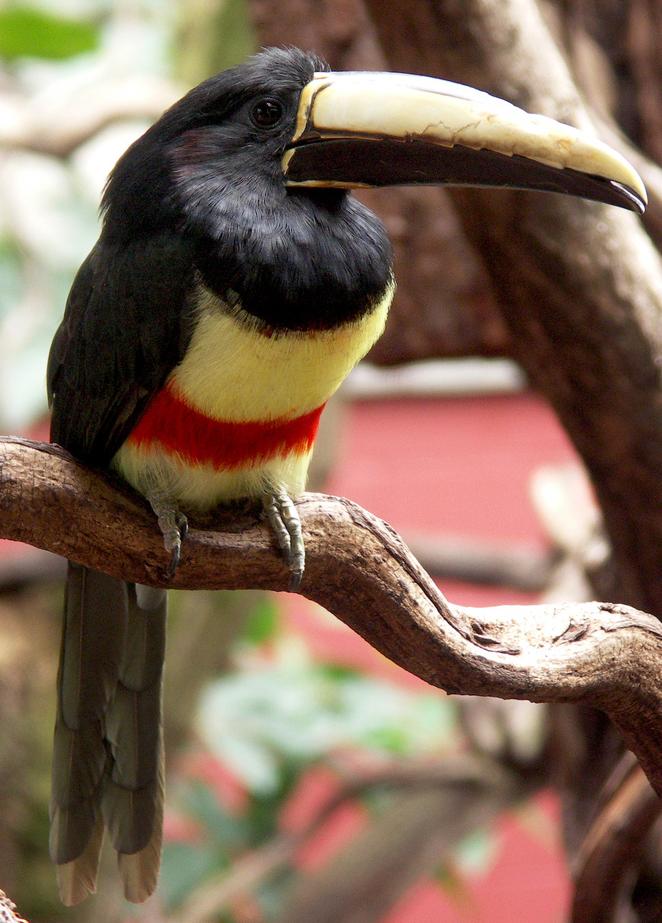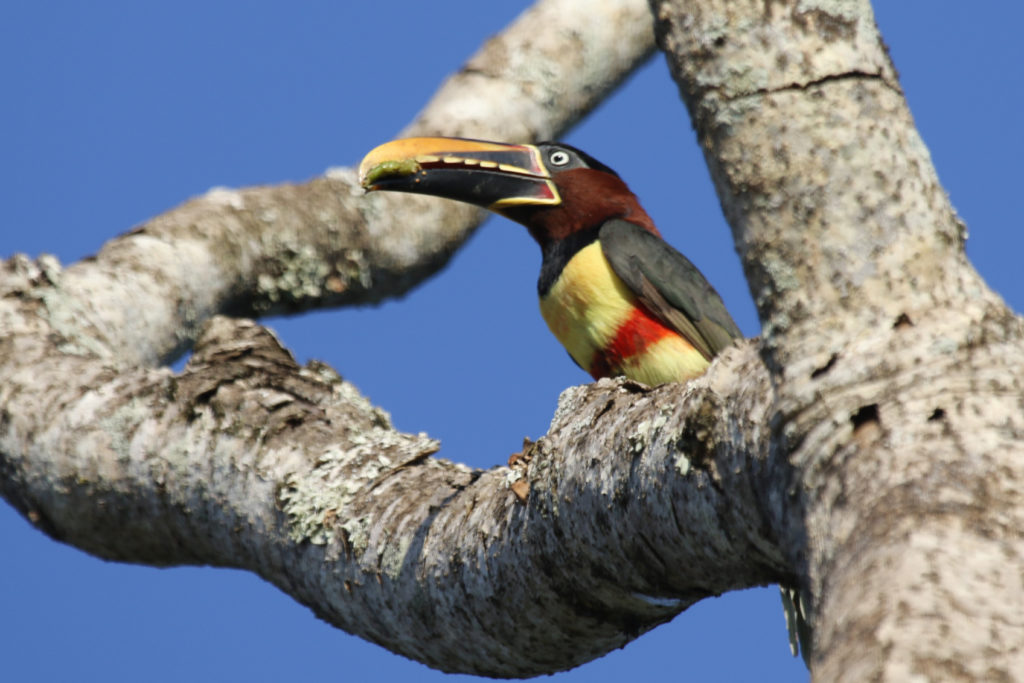See the Rainbow Family Ramphastidae on tours to Central & South America!
With showstopping bills and a rainbow of feathers, it’s not surprising that cereal pitchmen chose for a mascot the Toco Toucan, one of 43 unforgettable members in the Ramphastidae family. From toucans to aracaris to toucanets, these brilliant birds are always guest-favorite sightings in their Central and South American ranges.
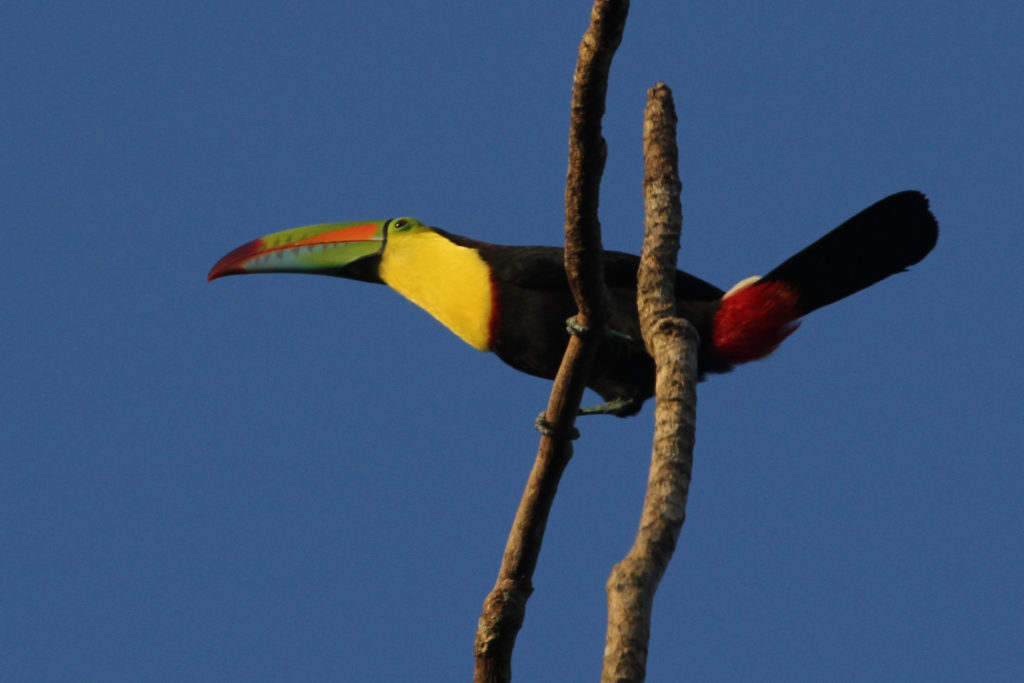
Let’s take a closer look at this showy family, and where you can find them on upcoming tours! Five genera of birds make up the toucan family: typical toucans (8), mountain toucans (4), aracari (14), green toucanets (11) and dichromatic toucanets (6).
These fruit-loving neotropicals are incredibly distinctive. Forest-dwellers that don’t migrate and spend most of their time perching, they have short wings, necks and tails, creating a compact body with powerful legs. But their most distinctive characteristic by far has to be that bill!
Bring the Bills
As useful as they are showy, a toucan’s bill can stretch up to four times the length of their heads. Though male toucans sometimes ‘fence’ for dominance with their bills or use them in defense of their nests, they are more a tool for feeding than fighting. Made of hollow keratin, their length may play some role in attracting a mate, perhaps because longer bills are better for gathering fruit and delivering a meal to young in the nest cavity — a signal they would be good providers.
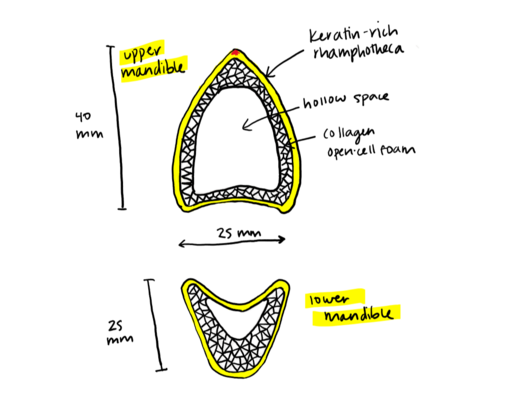
Breeding and Nesting
Toucans are cavity nesters, but they must hunt for naturally occurring hollows, or those made by woodpeckers or other animals, because their bills are not well-suited to excavation. Monogamous during mating season and laying one to five eggs depending on the species, both parents help incubate the eggs and care for the altricial chicks for eight or more weeks before they fledge. They won’t begin breeding their own chicks for three to four years.

What’s that Sound?
Toucans are also NOISY. Even though they are among the world’s larger and more colorful birds, in dense rainforest there is a good chance you will hear a toucan before you see it, and it might even frighten you! Sounding more like a mammal than most birds, toucans have a grunting, almost barking call, that some say sounds like a frog. The word ‘toucan’ is said to be an imitation of a typical call, and this Toco Toucan call does sounds like the word ‘toucan’ in places! Mountain toucans are said to have a braying call, like a donkey, like this call of the Gray-breasted Mountain-Toucan. In addition to vocalizing, many toucans have a variety of clattering sounds they make with those enormous bills, clacking upper and lower mandibles together, tapping their bills on branches or rattling their tongue against their closed bills — a bit like a maraca!
Biggest and Smallest
Nearly two feet in length, the gorgeous Toco Toucan is the largest member of the family, and always a guest-favorite bird on our Brazil’s Pantanal: Jaguars! & More tours, also seen on our tours to Guyana. Toco is also the heaviest toucan, weighing nearly two pounds. The smallest toucan by length is the Tawny-Tufted Toucanet, at 12.5 inches. The lightest, at just 3.4 ounces, is the Lettered Aracari, named for the squiggly markings on its bill, resembling writing, has been seen on our tours to Peru.

Distribution
Forming loose flocks of up to two-dozen birds, sociable toucans are found throughout Central and South America, and also in Mexico. Colombia and Brazil are home to the most species, (20), with Peru (19) and Ecuador (17) not far behind!
Here are some images of our favorite toucans, aracaris and toucanets, and where they can be spotted on our tours!
Toucans
Toucanets
Aracari
Toucans of South America
Argentina (Five Species)
Bolivia (Fourteen Species)
- Toco Toucan
- White-throated Toucan
- Channel-billed Toucan
- Southern Emerald-Toucanet
- Chestnut-tipped Toucanet
- Blue-banded Toucanet
- Hooded Mountain-Toucan
- Golden-collared Toucanet
- Gould’s Toucanet
- Lettered Aracari
- Chestnut-eared Aracari
- Ivory-billed Aracari
- Curl-crested Aracari
- Red-necked Aracari
Brazil (Twenty Species)
- Southern Emerald-Toucanet
- Tepui Toucanet
- Saffron Toucanet
- Green Aracari
- Lettered Aracari
- Black-necked Aracari
- Chestnut-eared Aracari
- Many-banded Aracari
- Ivory-billed Aracari
- Curl-crested Aracari
- Red-necked Aracari
- Guianan Toucanet
- Golden-collared Toucanet
- Tawny-tufted Toucanet
- Gould’s Toucanet
- Spot-billed Toucanet
- Toco Toucan
- White-throated Toucan
- Channel-billed Toucan
- Red-breasted Toucan
Colombia (Twenty Species)
- Yellow-throated Toucan
- White-throated Toucan
- Keel-billed Toucan
- Choco Toucan
- Channel-billed Toucan
- Southern Emerald-Toucanet
- Groove-billed Toucanet
- Chestnut-tipped Toucanet
- Crimson-rumped Toucanet
- Gray-breasted Mountain-Toucan
- Plate-billed Mountain-Toucan
- Black-billed Mountain-Toucan
- Yellow-eared Toucanet
- Golden-collared Toucanet
- Tawny-tufted Toucanet
- Lettered Aracari
- Collared Aracari
- Chestnut-eared Aracari
- Many-banded Aracari
- Ivory-billed Aracari
Ecuador (Seventeen Species)
- Yellow-throated Toucan
- White-throated Toucan
- Choco Toucan
- Channel-billed Toucan
- Southern Emerald-Toucanet
- Chestnut-tipped Toucanet
- Crimson-rumped Toucanet
- Gray-breasted Mountain-Toucan
- Plate-billed mountain-toucan
- Black-billed Mountain-Toucan
- Yellow-eared Toucanet
- Golden-collared Toucanet
- Lettered Aracari
- Collared aracari
- Chestnut-eared Aracari
- Many-banded Aracari
- Ivory-billed Aracari
Guyana (Eight Species)
- Toco Toucan
- White-throated Toucan
- Channel-billed Toucan
- Tepui Toucanet
- Guianan Toucanet
- Tawny-tufted Toucanet
- Green Aracari
- Black-necked aracari
Peru (Nineteen Species)
- Toco Toucan
- Yellow-throated Toucan
- White-throated Toucan
- Choco Toucan
- Channel-billed Toucan
- Southern Emerald-Toucanet
- Chestnut-tipped Toucanet
- Yellow-browed toucanet
- Blue-banded Toucanet
- Gray-breasted Mountain-Toucan
- Hooded Mountain-Toucan
- Black-billed Mountain-Toucan
- Golden-collared Toucanet
- Lettered Aracari
- Collared Aracari
- Chestnut-eared Aracari
- Many-banded Aracari
- Ivory-billed Aracari
- Curl-crested Aracari
Toucans Possible on Central American Tours
Belize (Three Species)
Costa Rica (Six Species)
- Northern Emerald-Toucanet
- Collared Aracari
- Fiery-billed Aracari
- Yellow-eared Toucanet
- Keel-billed Toucan
- Yellow-throated Toucan
Guatemala (Three Species)
Honduras (Five Species)
- Northern Emerald-Toucanet
- Collared Aracari
- Yellow-eared Toucanet
- Keel-billed Toucan
- Yellow-throated Toucan
Panama (Seven Species)

